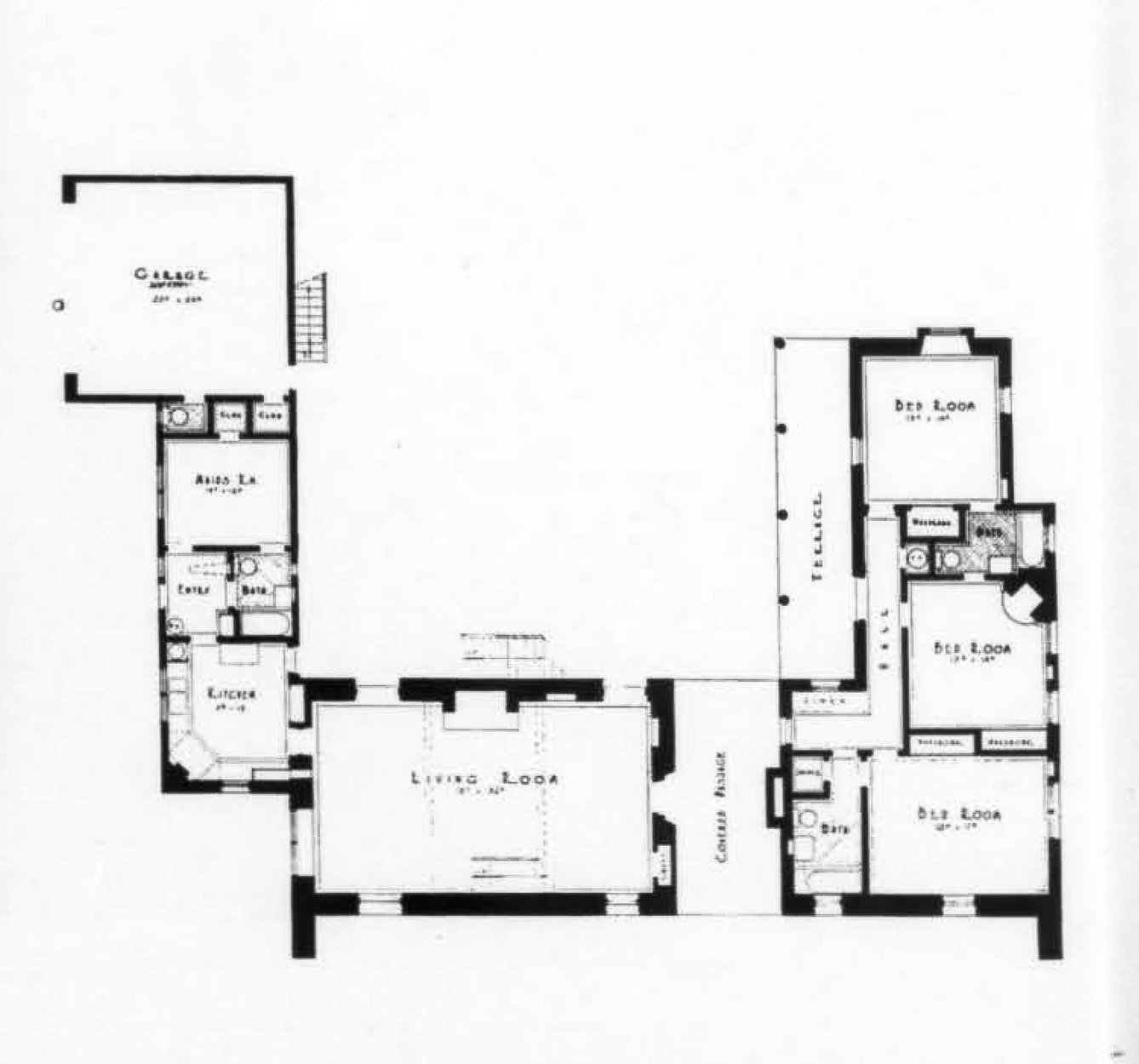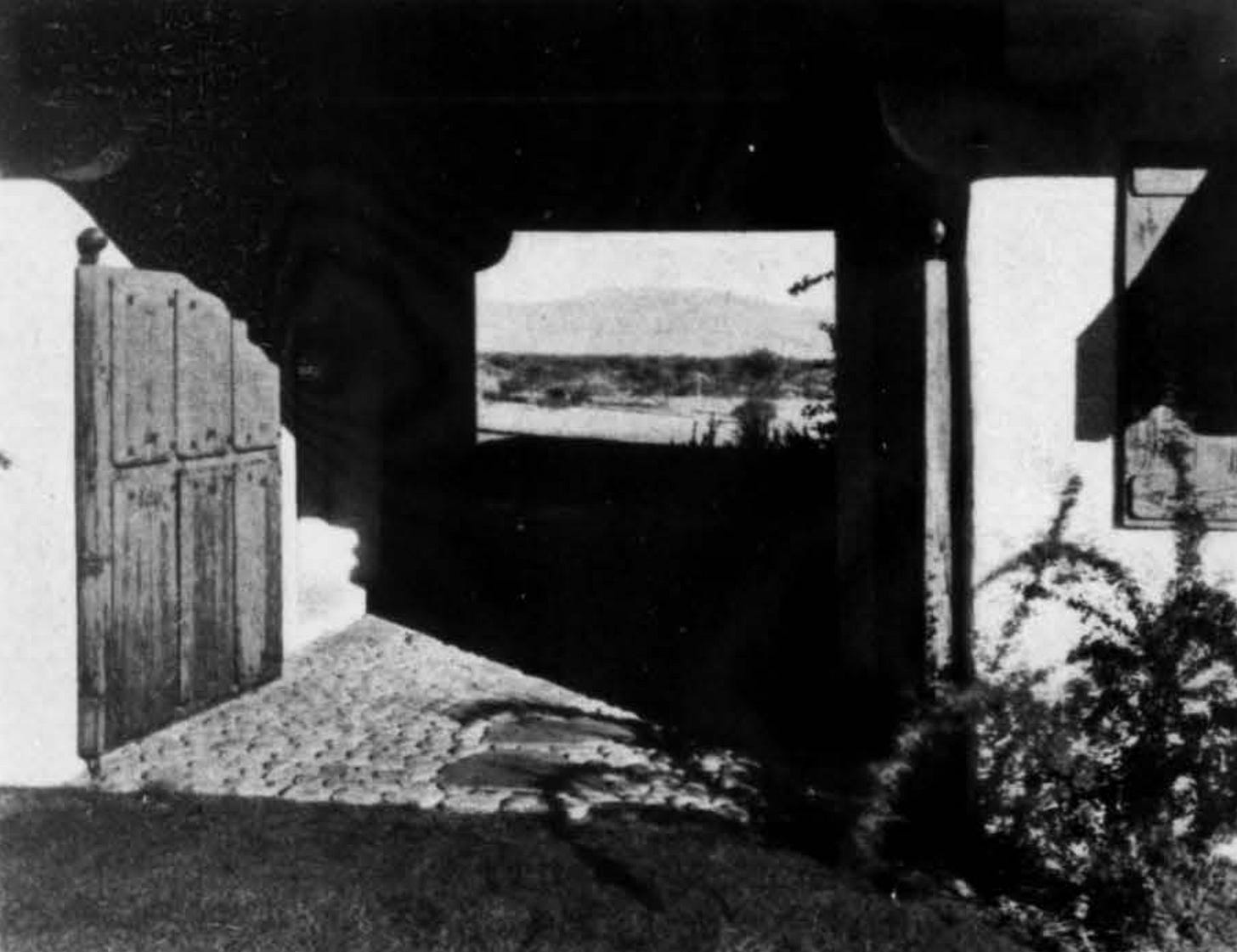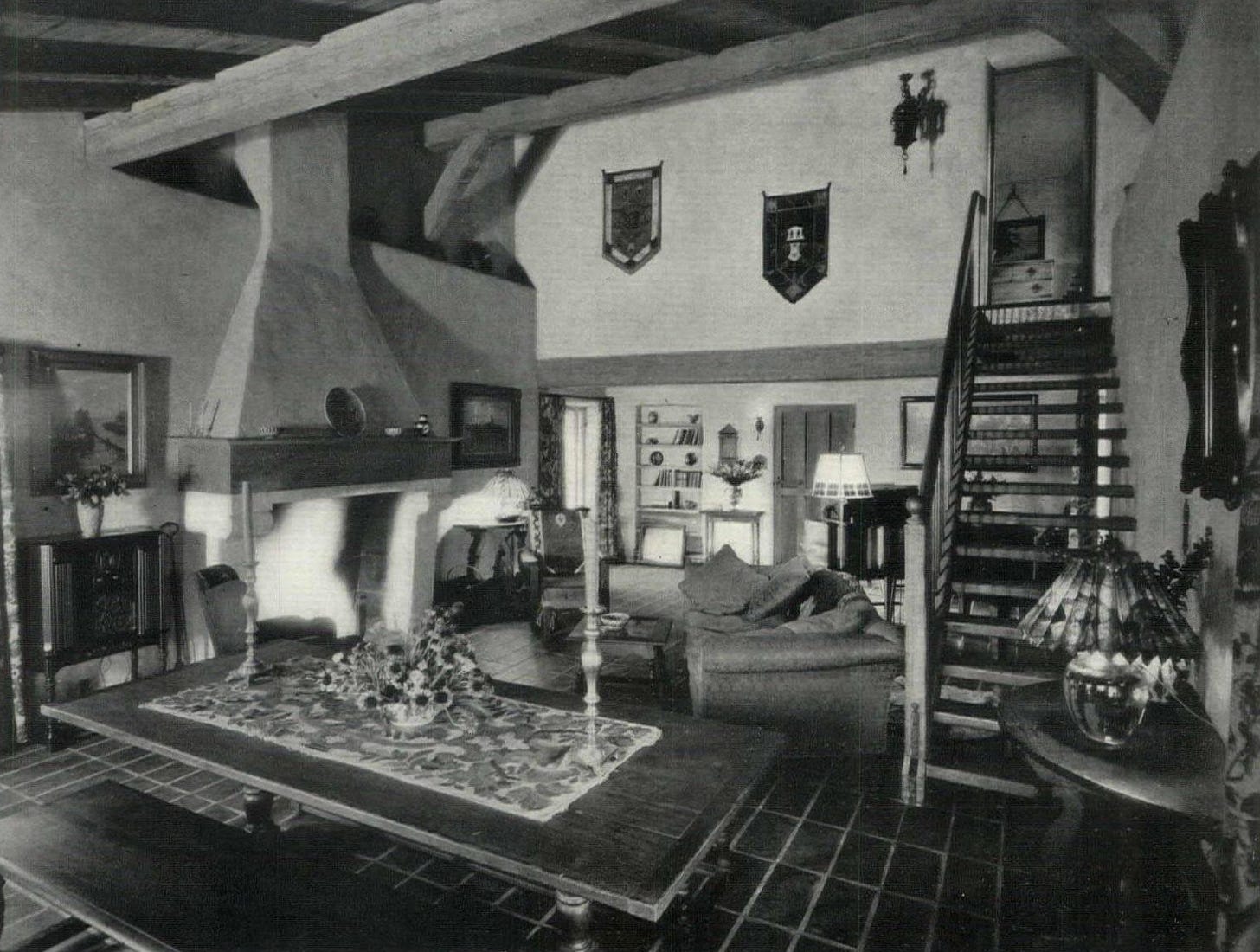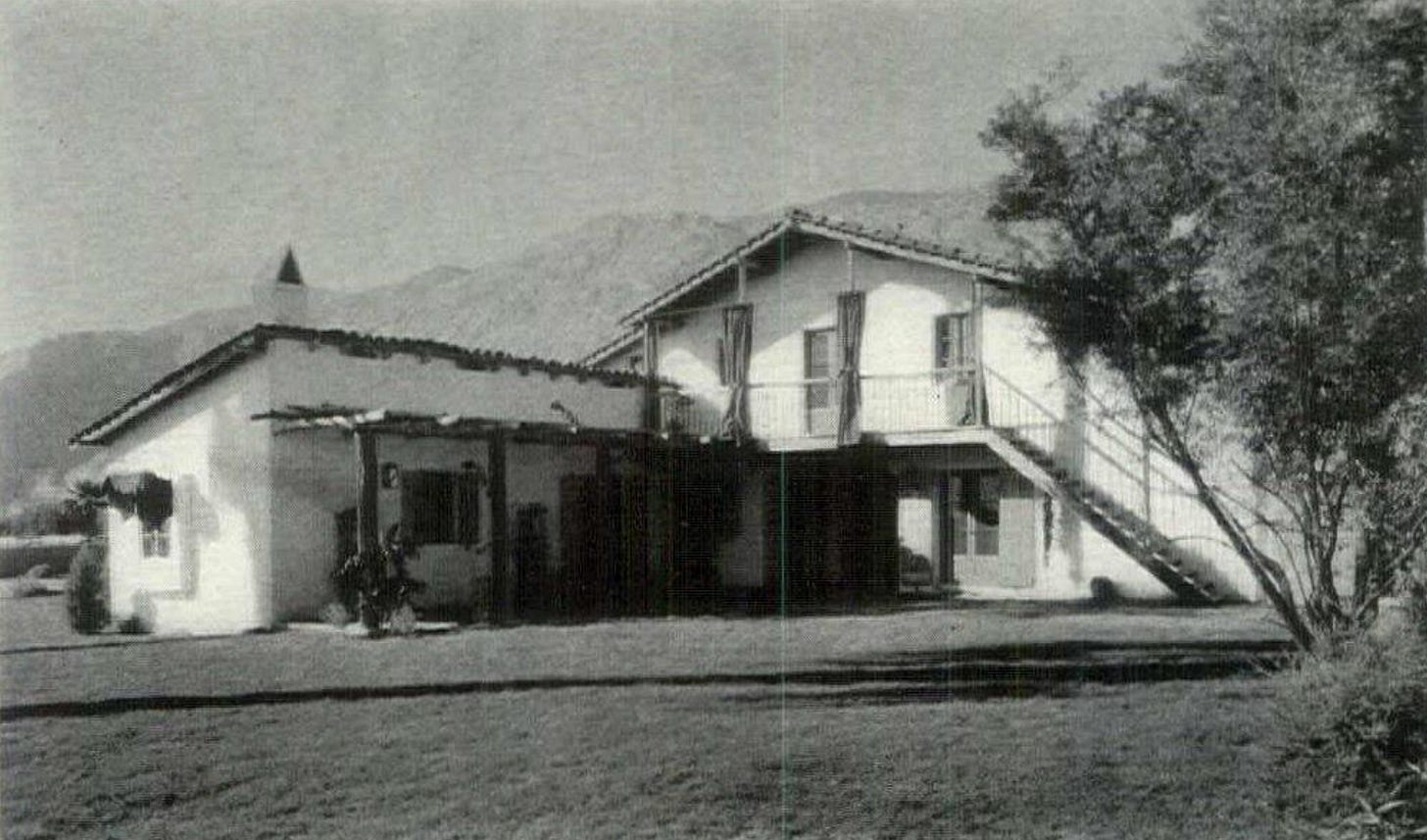The Palm Springs Residence of Mr. Julian St. John Nolan
Architect John Byers & Edla Muir, Associate create an Andalusian fantasy in the Coachella Valley.
Similar to our last home, the John Byers and Edla Muir-designed residence for Mr. Julian St. John Nolan boasts a convoluted history, and who better to tackle this research conundrum than our gang of Robbie Adobe Architectural Detectives™! Before we dive into twists and turns of the Andalusian farmhouse-inspired Nolan residence, let’s review the multifaceted lives of architects John Byers (1875-1966) and Edla Muir (1906-1971). Born in Grand Rapids, Michigan, Byers would study electrical engineering at the University of Michigan and Harvard before heading across the pond to join the U.S. Commission at the Paris Exposition as an electrical engineer from 1900 to 1901.1 Before heading back to the States in 1910 to teach Spanish and French at Santa Monica High School, Byers would travel south of the equator to teach linguistics at the North American Academy in Montevideo, Uruguay.2 Byers would begin his stint in architecture supervising the construction of an adobe house for a cousin in 1919, and would officially begin practicing architecture full time by 1922.3
One of Byers earliest employees was Edla Muir, an Inglewood high school student who he would first hire as an office assistant in 1919. By 1926, Muir would be promoted to draftsperson and would be promoted to associate upon receiving her architects license in 1934.4 And, now that we have the architects down, let’s see what we can find on the home itself.
According to the City of Palm Springs Historic Resources Inventory & Context Statement, the home was designed in 1927 by architect John Byers, yet makes no mention of the home’s original owner, and instead centers future owner Cary Grant’s tenure, which began in 1954.5 The City’s Class 1 And Class 2 Historic Sites, Historic Districts, And Properties Listed On The National Register Of Historic Places register includes the home as Historic Site 75 known as “The Cary Grant House (Las Palomas),” yet also does not include information on the year the home was built, it’s original owner, or architect. However, a City of Palm Springs plaque outside the home notes that the home was built by a Dr. Jacob John Kocher in 1930, yet also makes no mention of the home’s original architect. Curiouser and curiouser.
The home, influenced by Andalusian farmhouses and perhaps even the sweeping roofs of Swiss chalets, is organized around a spacious U-shaped floor plan. The home’s interior spaces are accessed through a wide corridor, which separates the living and services areas from the first floor bedroom wing. This style of entry recalls informal, vernacular architecture inherent to country living, embodying the pioneering spirit many early Palm Springs settlers wished to embody in the homes and lifestyles. The shape of the home also helps to frame the view of the San Jacinto Mountains behind it, helping to bring focus to the expansive desert landscape.
The home’s primary suite is located upstairs, and is accessible via both indoor and outdoor staircases. During the late twenties and early thirties, Byers and Muir were quite enamored by exterior staircases, and it’s romantic inclusion here comes as no surprise.
Here we have an up close and personal view of the home’s entry corridor; note the cobblestone flooring, heavy wooden doors, beams, and shutters—Byers and Muir created a tactile wonderland!
Once inside, we are greeted by a warm interior of terracotta tiles, plaster walls, an airy wooden staircase, and a soaring wood beam ceiling. I love the size of the home’s hearth as well as the informal placement of furniture throughout the generously-sized room.
And now, who is this Dr. Jacob John Kocher character? Kocher first moved out to Palm Springs in 1917 and would soon cement his reputation as one of the finest doctors in the Coachella Valley, and was soon known as the “Desert Doctor.”6 In 1934, Kocher would tap his brother, architect A. Lawrence Kocher and his partner, Albert Frey, to design the modernist Kocher-Samson Building, which still stands at 766 N. Palm Canyon Drive.7
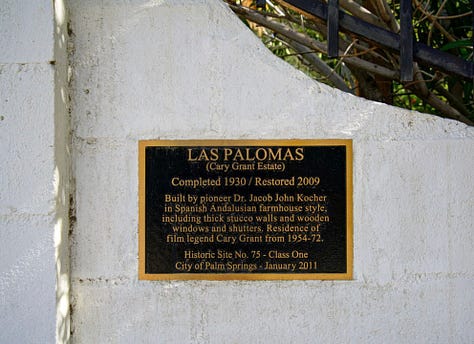
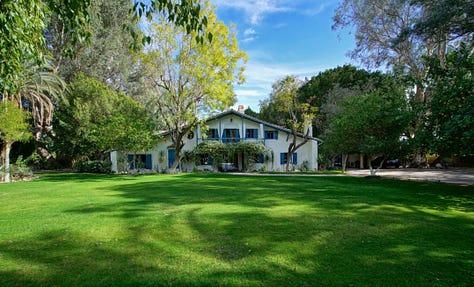
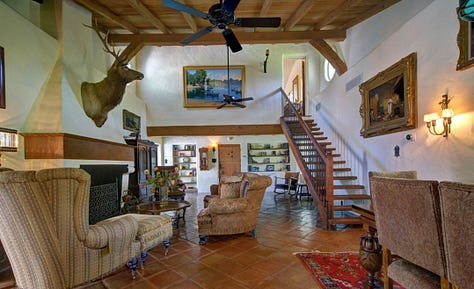
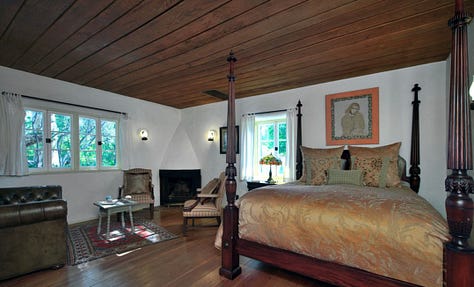
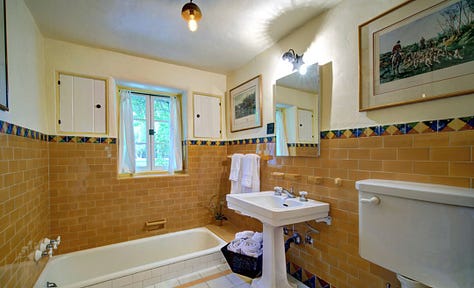
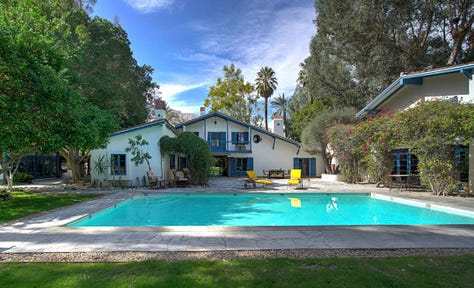
A Los Angeles Times article noting the home’s 2016 sale for $3,400,001, shares that the home was “designed by architect John Byers for Dr. Jacob John Kocher in 1930,”8 yet the Online Archive of California Finding Aid for the John Byers papers at UCSB’s Architecture and Design Collection, Art, Design & Architecture Museum lists the home as the “Nolan, Julian St. John house (Palm Springs, Calif.) circa 1933-1938”9 and makes no mention of Kocher. Similarly, the May 1933 issue of House & Garden and February 1938 issue of California Arts & Architecture list the home as the residence of Mr. Julian St. John Nolan.10
Perhaps the most well research insights into the Nolan residence come from Patrick McGrew’s 2012 article for PBS titled “Mr. Nolan Builds His Dream House: Palm Springs' Cary Grant House, The Backstory,” which sheds light on the home’s lively history, and makes no mention of Dr. Jacob John Kocher anywhere.11
However, as noted above, the home’s most famous resident was silver screen legend Cary Grant, who would reside at the home on and off from 1954 to 1972. According to this article, following the home’s completion in 1930 for the Yale-educated Travelers' Insurance Company heir Julian St. John Nolan, Nolan would transfer the home’s title to his sister, Emily, before her estate would sell the home to Grant’s lawyer in 1954. The home’s title would soon be transferred to Grant, who would tap Wallace Neff to remodel the home’s garage and it’s associated apartments. After Grant would decamp in 1972, a series of owners would follow before the home’s most recent stint on the market in 2016. Located within the city’s Movie Colony neighborhood at 928 N Avenida Palmas, the home is extant has been well maintained.
I can’t wait to get down into the archives myself and see what I can manage to uncover. This tale is one that will definitely be going into my future book!
John Byers (1875-1966): Adobe Houses, accessed May 1, 2025, http://www.adc-exhibits.museum.ucsb.edu/collections/show/26.
Ibid.
Ibid.
Ibid.
Context: Palm Springs between the wars (1919-1941), accessed May 1, 2025, https://www.palmspringsca.gov/home/showpublisheddocument/63940/636806566475830000.
Greg Niemann, “CV History: Two Pioneer Doctors Left a Lasting Legacy in Palm Springs and the Coachella Valley,” Coachella Valley Independent, April 12, 2025, https://cvindependent.com/2025/04/cv-history-two-pioneer-doctors-left-a-lasting-legacy-in-palm-springs-and-the-coachella-valley/.
Ibid.
Neal J. Leitereg, “Cary Grant’s Onetime Retreat Fetches a Movie Colony Record $3.4 Million,” Los Angeles Times, May 12, 2016, https://www.latimes.com/business/realestate/hot-property/la-fi-hotprop-cary-grant-price-record-20160512-snap-story.html.
Chris Marino, Finding aid for the john byers papers, 1917-1955 0000115, accessed May 1, 2025, https://oac.cdlib.org/findaid/ark:/13030/c8zs2vhz/entire_text/.
Ibid.
Patrick McGrew, “Mr. Nolan Builds His Dream House: Palm Springs’ Cary Grant House, the Backstory,” PBS SoCal, December 21, 2021, https://www.pbssocal.org/shows/artbound/mr-nolan-builds-his-dream-house-palm-springs-cary-grant-house-the-backstory.





